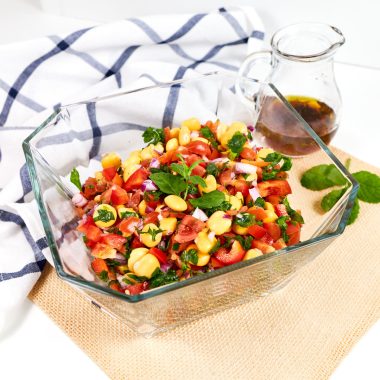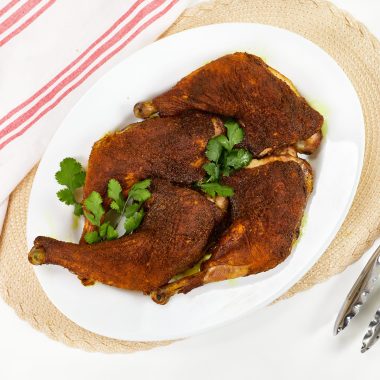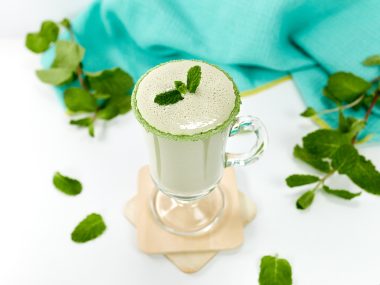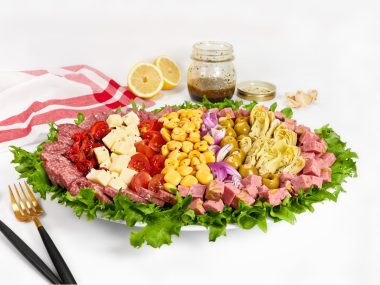Poaching is a very easy and forgiving way to cook fish, and this special way of poaching is even better: there’s no boiling or simmering! This simple and fool proof method ensures a perfectly cooked cod, moist and flaky every time!
There’s no simpler and quicker way to prepare a delicious cod fillet keto dinner!
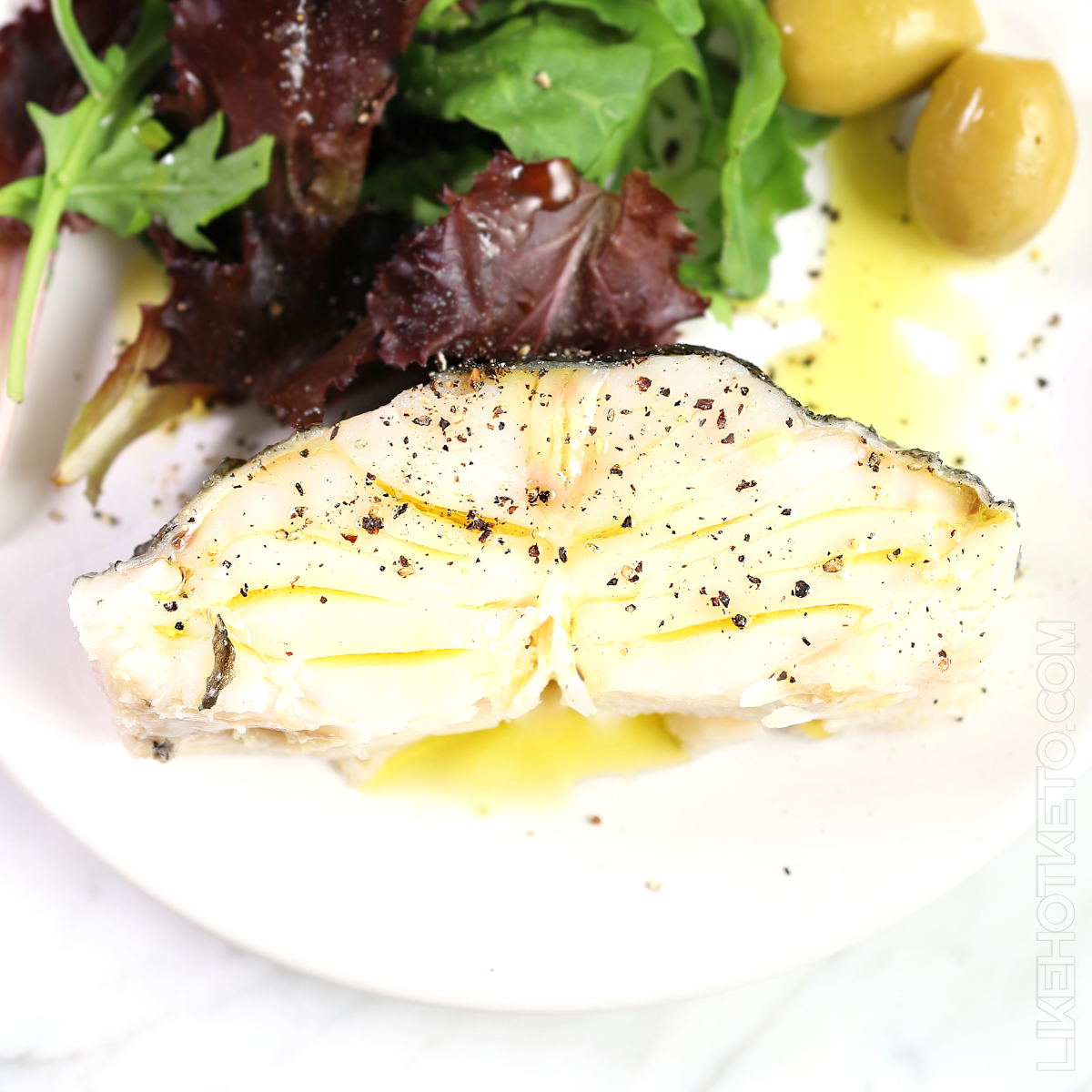
How to poach without boiling
There are several ways of poaching, but most of them will have you simmering or gently boiling the fish for some amount of time.
The fact is, fish doesn’t need to be boiled to cook. At all! The residual heat from the poaching liquid after removed from the stove top is more than enough to cook fish fillets to perfection.
Attention, I’m not talking about a whole fish here. This method of poaching in hot water without simmering or boiling is ideal for pieces of fish already cut to serving sizes, like fish fillets, steaks, portions or loins.
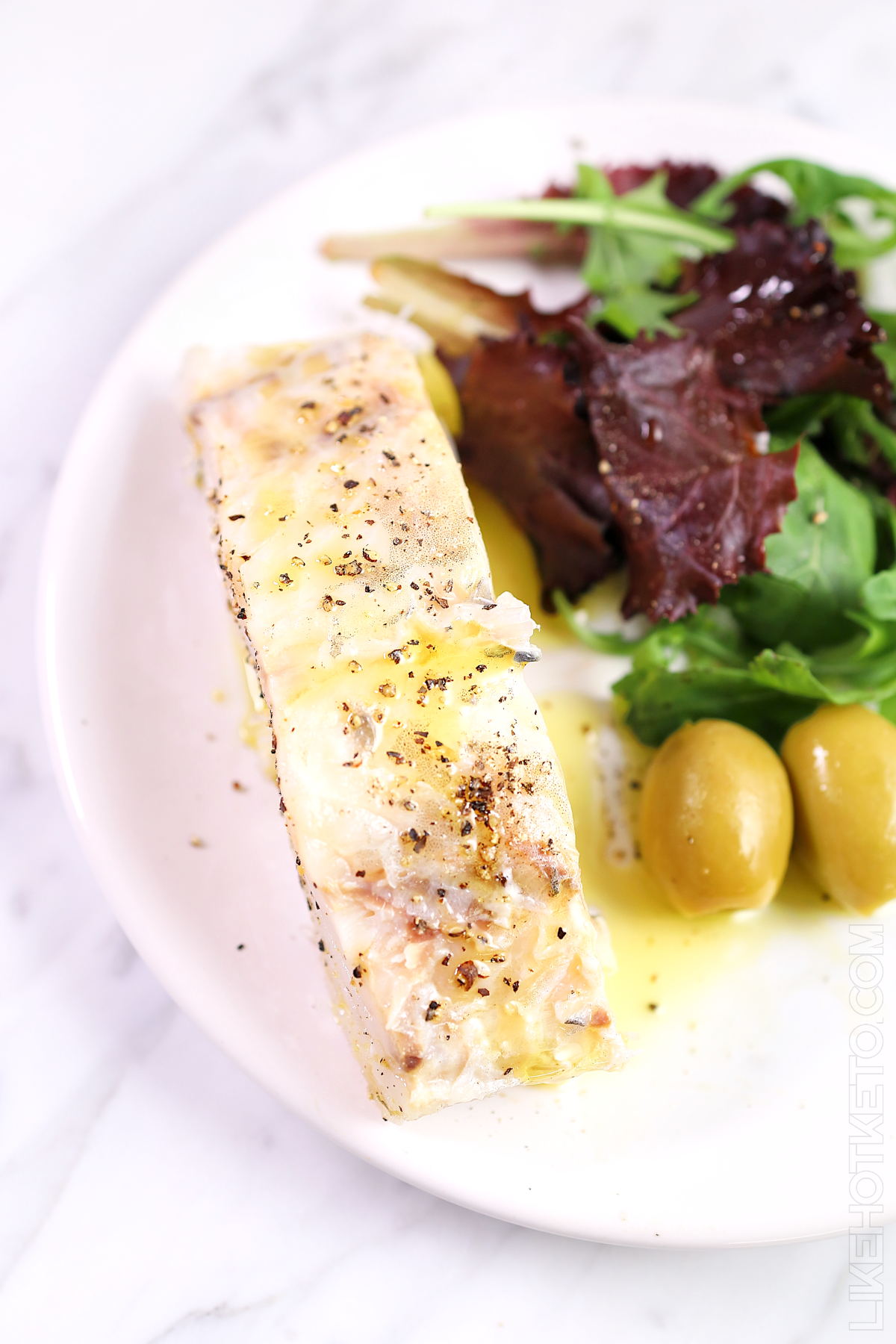
The best way to prevent overcooked fish
What’s really great about this no-boil poach method is that it’s nearly impossible to overcook the fish. The temperature isn’t high enough for that, given that the water isn’t boiling or even simmering. The quiet liquid also keeps the shape of the delicate fillets.
Did you know that the number one reason cooks often end up with dry and rubbery fish is that they overcook it to death for fear of eating it undercooked?
When I think of this, I remember how much I love sashimi. And on to steak tartare, and mett. Buying good quality fish of a trustable source is a better and more pleasurable way of avoiding problems than overcooking it.
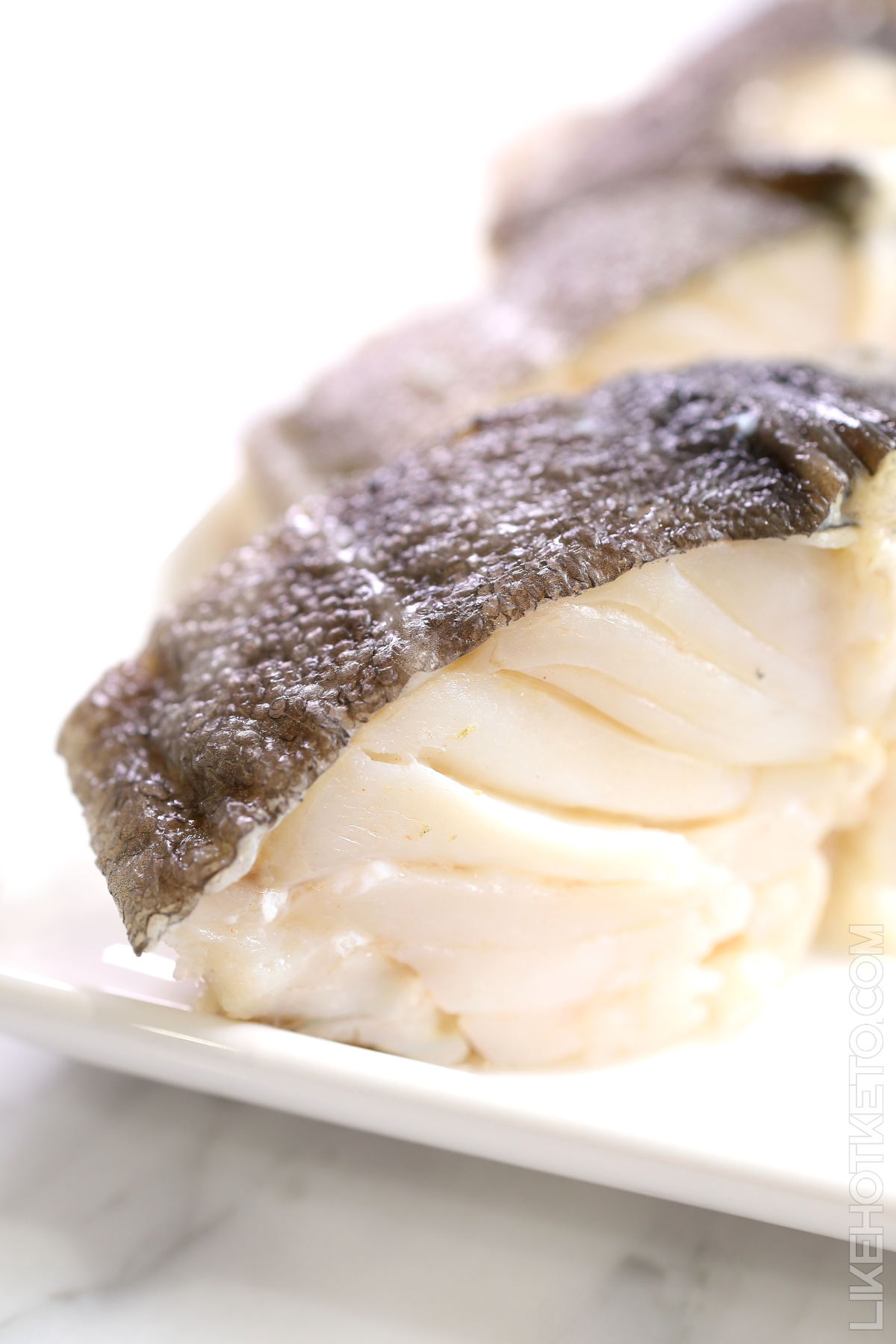
How does poached fish taste like
Some people might think that poached fish tastes bland or boring. That’s because often times the food is poached in water only, or water and salt.
To make a flavorful poached fish, you need to season well the water, and these flavors will be imparted on the fish.
Another reason that poached fish may seem a bit bland is because of its appearance. I won’t lie, it could look prettier. Fish (or any food) doesn’t brown when poached, and neither gets a crust.
Poached fish is evenly soft and pale, very delicate looking and quite different than the golden brown color with crispy bits that you usually get when baking it in the over or pan frying.
But don’t let the humble appearance dissuade you from trying! The delicate and buttery flavor and perfect flaky texture of poached fish just can’t be beaten!
Boiled cod throughout the world
A similar method of cooking cod is used in different European countries. Good recipes are quick to spread around and adopted by new cultures.
In Portugal it’s bacalhau cozido. Sometimes, they add milk to the boiling water to make the cod (bacalhau) even more tender.
Bacalhau cozido is usually served with a generous drizzle of olive oil (Portugal has some of the best olive oil in the world!), with boiled potatoes and turnip greens on the side.
In Norway, the boiled cod is kokt torsk, and is traditionally served with carrots, potatoes and garnished with fresh dill.
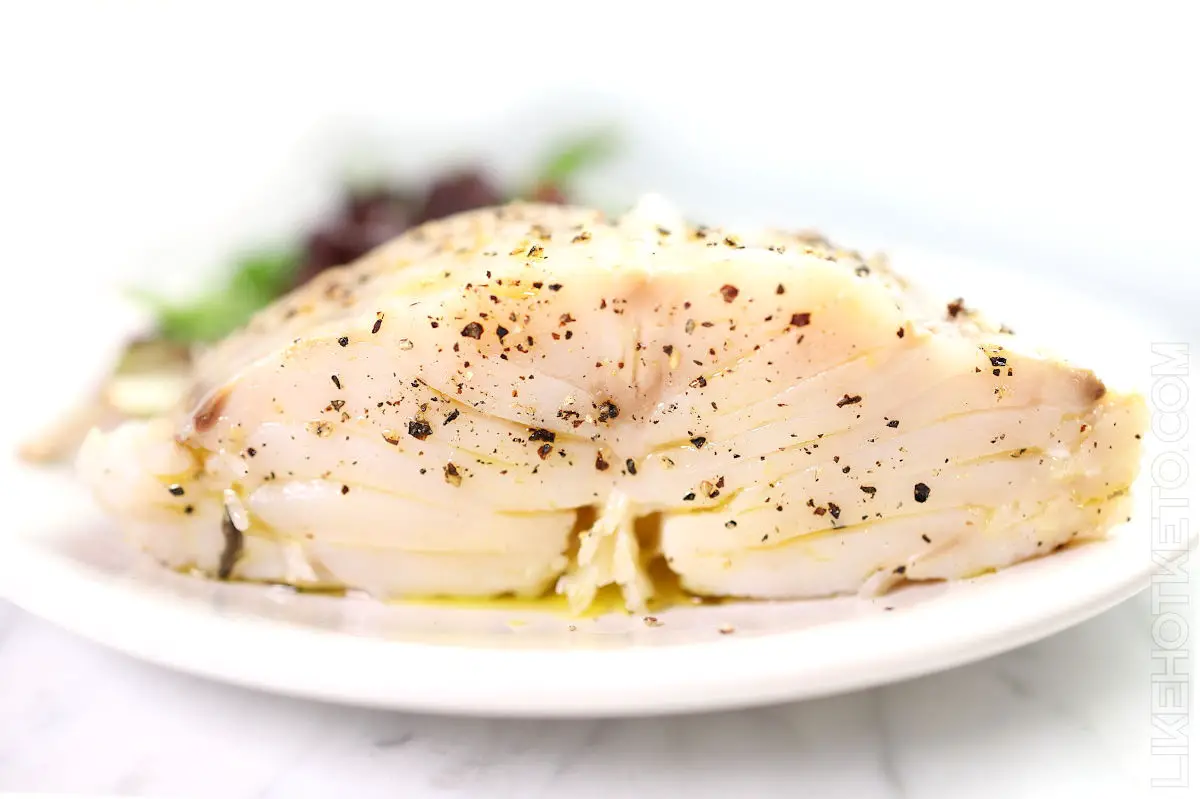
In France, it’s cod poached in court bouillon – court bouillon being a quick white broth of water, white salt and aromatics, sometimes with the addition of white wine or lemon for acidity.
The court bouillon broth is used specially to poach delicate meat such as fish, chicken and also vegetables.
Base ingredients
For this recipe, I kept the spices really simple, based on one of the many ways the Portuguese prepare their bacalhau cozido (cooked cod). This poaching liquid tastes incredibly homely, and is simply flavored with salt, bay leaves and garlic.
If using a very fresh, noble cut of fish – here I used cod loin, which is like the filet mignon of the fish world – you don’t really need anything else to make it shine!
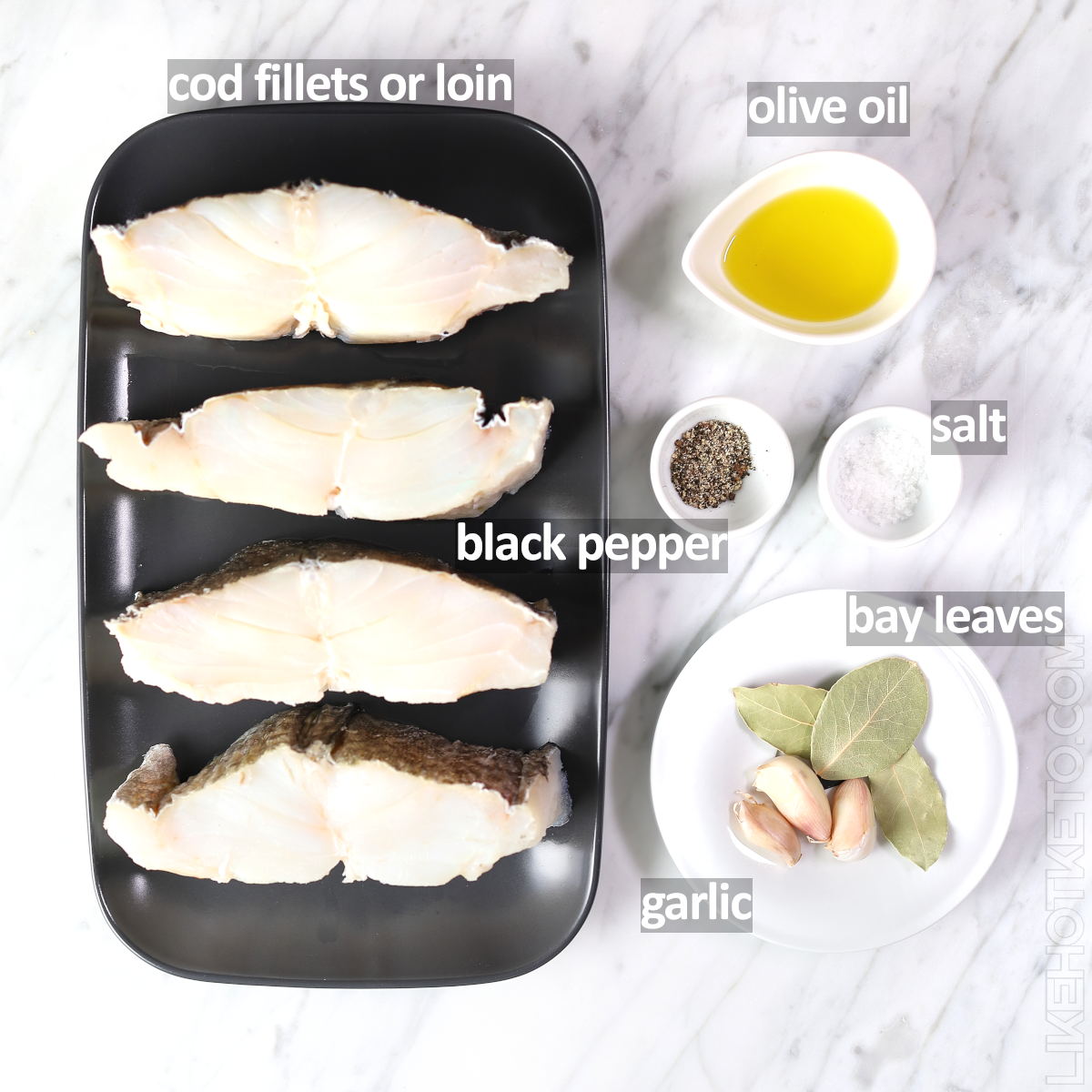
This recipe works great not only for cod: any firm flesh fish like haddock, halibut, bass or tilapia can also be used. Whatever you chose, it must be at room temperature. If you are using frozen fish, let it thaw in the refrigerator overnight.
The olive oil (extra virgin for the best taste) and freshly ground black pepper are added after the fish is cooked, just before serving.
More fish poaching liquid flavors
The sky is the limit, as far as of what you can add the the fish poaching liquid. So, feel free to add in more spices and aromatics to this simple broth as you like. Check out these ideas:
- For a French inspired flavor, add to the base recipe 1/4 cup of white wine, a thyme sprig, some parsley and a handful of chopped celery, onions and carrots. These 3 veggies combination is called mirepoix and gives a wonderful flavor. Serve the cod with some melted garlic butter instead of olive oil and black pepper.
- A delicious combination with an Asian twist: Remove the bay leaves from the recipe, and instead add a few cilantro sprigs, a smashed inch long knob of ginger and a small handful of roughly chopped chives. Serve the fish fillets with squeezed lemon juice and a tiny sprinkle of chili flakes.
For either variation, proceed the same way as for the written recipe, adding the salt, and making sure to simmer the broth for just long enough to get it infused with flavors.
- To make it even easier, you can just add the fish to a pan with stock. You can use a homemade broth of vegetables or chicken, or dissolved bouillon cubes of your preferred flavor. The best ones for poaching fish are fish (surprise?), chicken (surprise!) and vegetable.
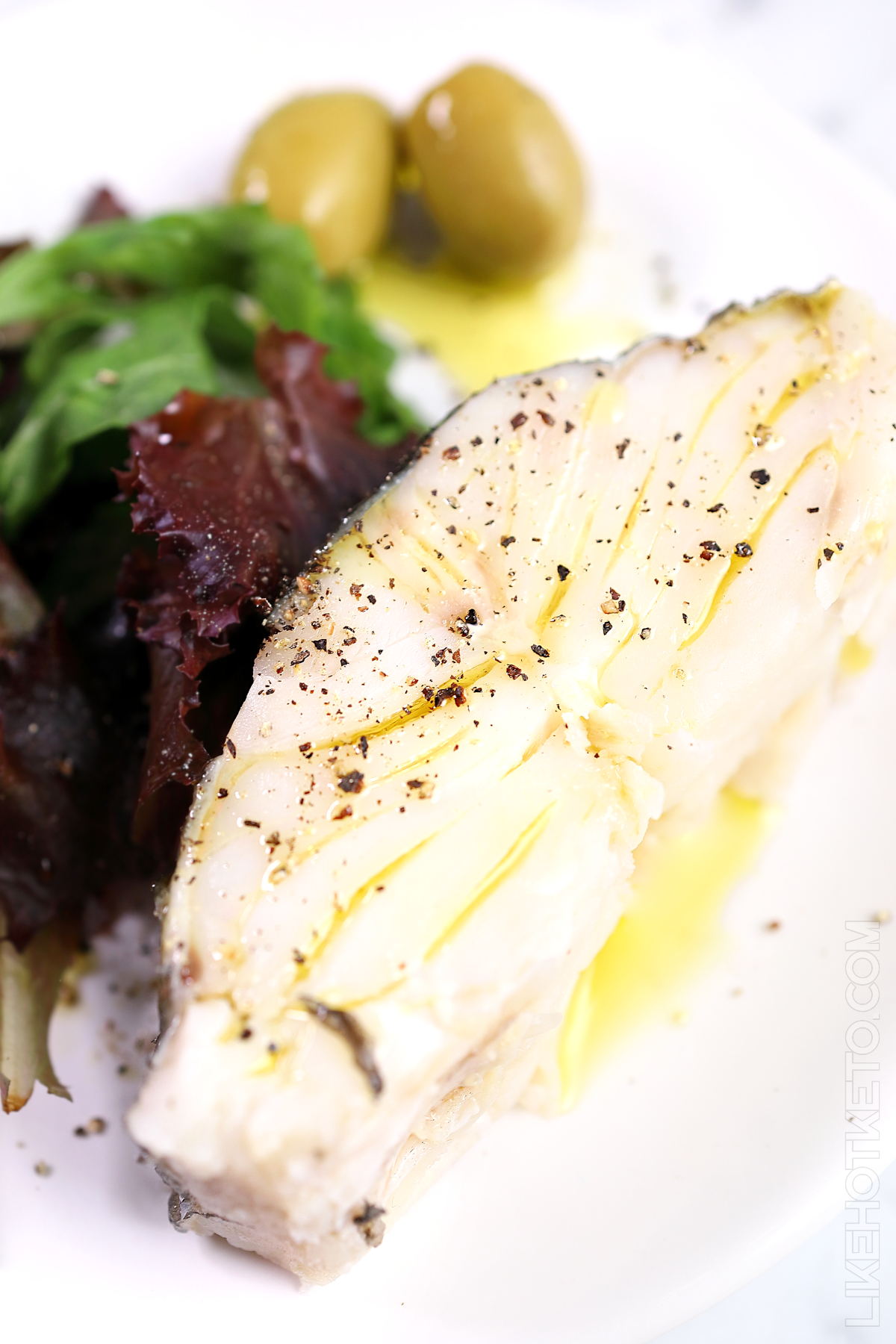
How to poach cod
Choose a pot that will be able to accommodate all the fillets without getting crowded. You can easily adapt this recipe for as many servings as you like.
You can cook in more than one go, if you don’t have a large enough pot. Just bring the water to a simmer again after removing he first batch, and repeat the process.
The fish must be at room temperature, and be fully thawed if starting from frozen. If poaching fillets with the skin on, score the skin with a few diagonal cuts to prevent the fillets from curling during cooking.
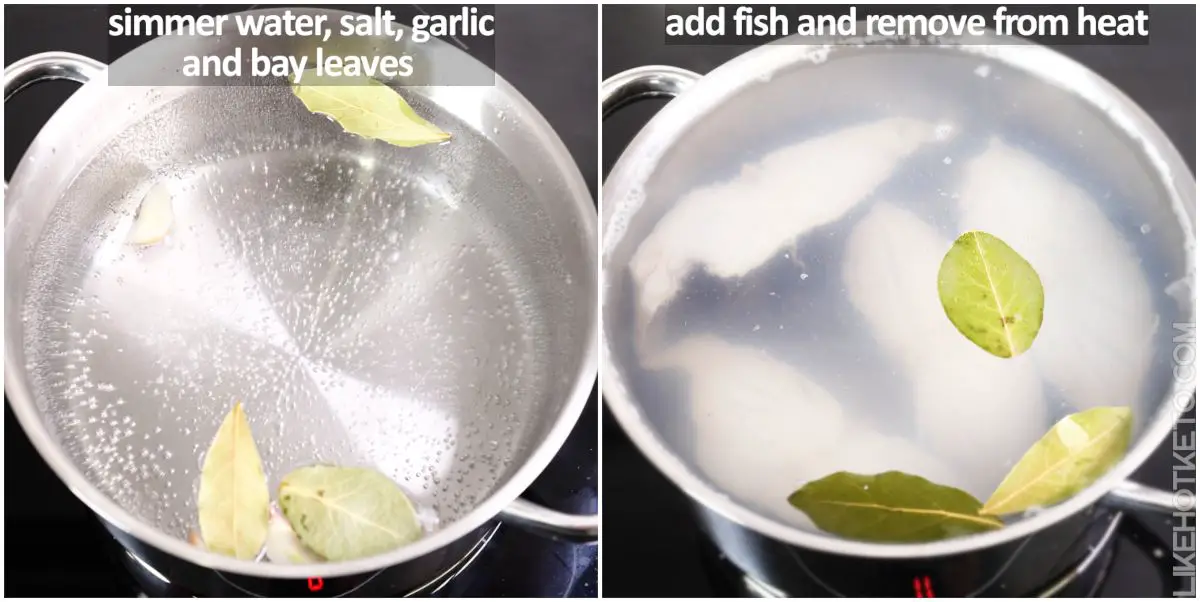
As this is a deep poaching method, you’ll need enough water to fully submerge all of the fish. Fill the pot with the water, and add the salt, crushed garlic and bay leaves.
Wait for the simple court bouillon to come to a simmer, and a few minutes for it to start releasing the aroma of the garlic. Just then, gently lower the fish pieces into the broth.
As soon as the poaching liquid starts simmering again (it might not even stop, if you have a larger amount of water and less fish) immediately switch off the stove and remove the pan from the heat – really important if you have an electric stove!
Cover the pot with a lid to prevent the escape of heat and wait for the hot broth to cook the cod fillets (or your choice of fish) in the gentlest way possible.
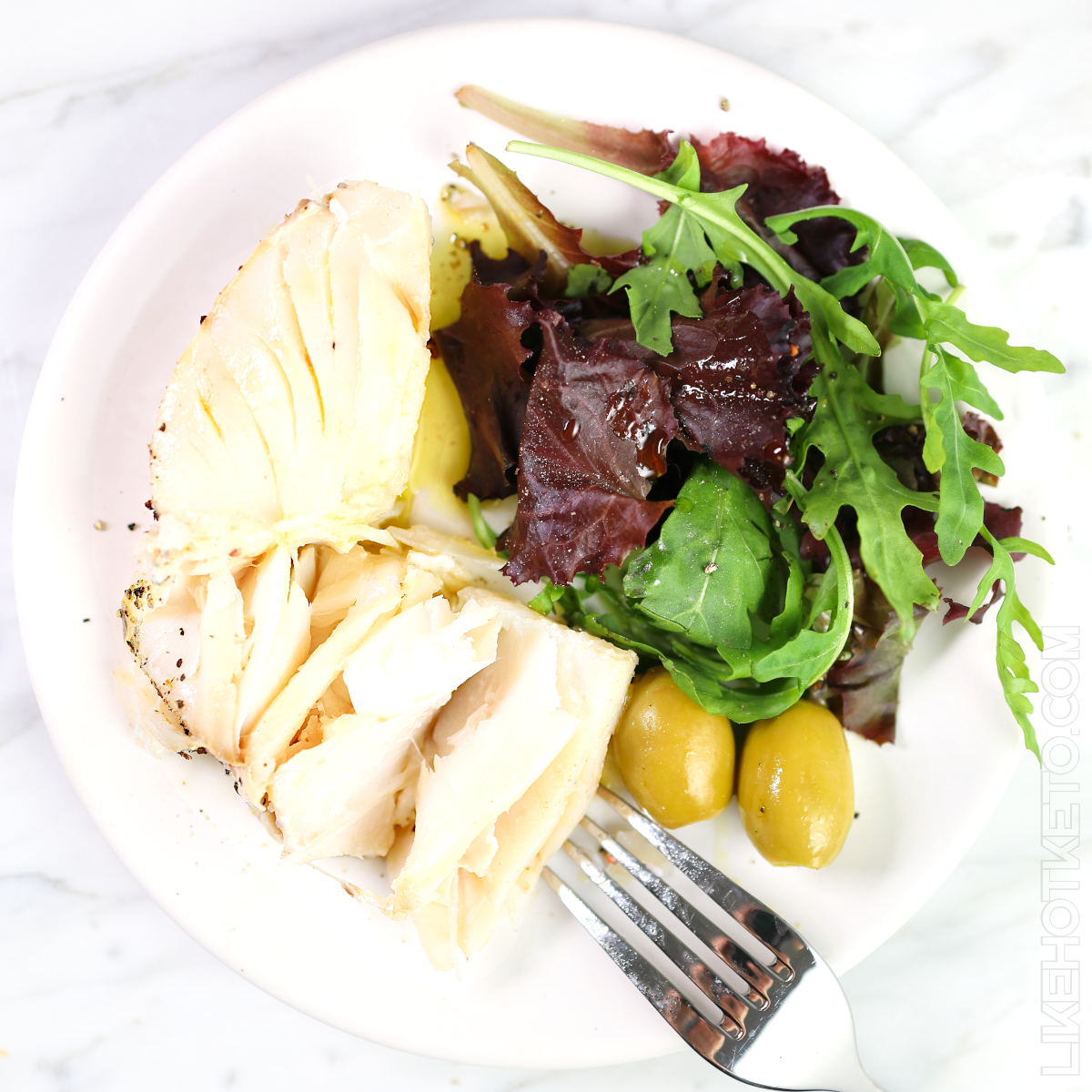
Poach one inch thick fillets for about ten minutes. Keep taller fillets or thick steaks submerged for 15 minutes in the hot broth to ensure they get cooked through.
If you are unsure if the fish is done after the 10-15 minutes mark, you can check by poking it with a fork. The flesh should be very soft and just about to flake apart.
Serving suggestions
For a super keto, nearly carb free meal, you can serve the cod fillets with a simple leafy green salad. The fish is full of protein and nutrients, and you’ll get plenty of healthy fats from the extra virgin olive oil.
Poached fish is often served with potatoes, many times cooked in the same poaching broth used for the fish. Or, over a bed of potato mash and topped with a buttery sauce. It’s easy to adapt these fish side dishes into keto friendly versions:
Instead of poached potatoes, I recommend this low-carb loaded oven roasted radishes recipe. And for a “keto potato mash”, try this roasted turnip and garlic mash instead!

Perfect Poached Cod
Ingredients
- 4 cod fillets / loins or other firm flesh white fish like bass, haddock, halibut or tilapia
- 5 cups water or enough to fully submerge the fish
- 2 teaspoons salt
- 2 garlic cloves crushed
- 2 to 3 bay leaves
Serving suggestion
- freshly ground black pepper to taste
- extra virgin olive oil for drizzling
- lemon wedges optional
Instructions
- Choose a pot that will fit all the pieces of fish without crowding. Add water, salt, crushed garlic and bay leaves and bring it to a simmer.
- When you feel the aroma of the garlic, after about 5 minutes simmering, lower the fish fillets into the liquid. Wait for a moment and when it just starts simmering again, remove the pot from heat. Put the lid on.
- Let the fish poach in the closed pot with hot broth for 10 minutes (for up to 1 inch thick fillets) to 15 minutes (for thicker pieces).
- Gently remove the fish with a slotted spoon or strainer, and serve immediately with a drizzle of extra virgin olive oil and freshly ground black pepper.
